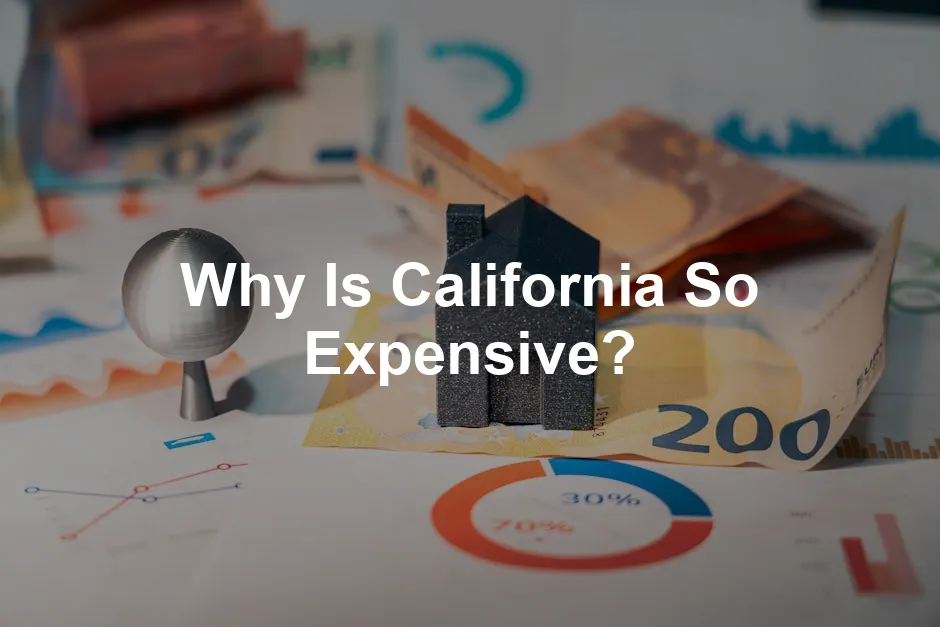
Why Is California So Expensive?
Introduction
California is famous for its stunning landscapes and vibrant culture. However, it also carries the title of one of the most expensive states to live in. High living costs impact residents’ daily lives and strain the economy. Various factors contribute to these expenses, from housing availability to taxation policies. Let’s break down the reasons behind California’s high cost of living.
If you want to dive deeper into the colorful history of California, check out California: A History. It’s a perfect blend of fascinating stories and facts that will make you appreciate the Golden State even more!
Summary and Overview
The high cost of living in California is complex and multi-faceted. It involves several key elements like housing, wages, taxes, and demand. California’s housing market is one of the most significant contributors to living expenses. For instance, the median home price in California is about 2.5 times higher than the national median. This disparity forces many residents to spend a significant portion of their income on housing, often exceeding 30%.
Moreover, the state’s economy drives demand for skilled labor, leading to higher wages. While this sounds beneficial, it also raises living costs. California has some of the highest state taxes in the nation, affecting disposable income. The combination of these factors creates a challenging environment for residents, leading to discussions around potential solutions. With over 300,000 Californians experiencing homelessness, addressing these issues is crucial for both social stability and economic growth.

Cooking in California? You might want to explore The California Cookbook. It’s filled with delicious recipes that capture the essence of California’s diverse culinary scene, perfect for impressing your friends or just enjoying a night in!
Housing Market Dynamics
Supply and Demand Imbalance
California’s housing market faces a significant supply and demand imbalance. The state has experienced rapid population growth, especially in urban areas. People flock to California for its job opportunities and lifestyle. Unfortunately, the housing supply hasn’t kept pace. Over the past decade, California has built fewer than half of the 180,000 new units needed annually to stabilize prices.
Historical construction rates reveal a troubling trend. Despite the demand, many coastal cities have seen little new housing development. This limitation leads to fierce competition for available homes, intensifying the housing crisis. On the flip side, rural areas struggle with their own issues. They often have more available land, but lack the infrastructure and job opportunities that attract residents.
Data shows that California’s housing shortage is stark when compared to national averages. While the U.S. faces a housing shortage, California’s is particularly acute. The state needs millions of new housing units to meet current demands. The result? High housing demand and limited supply push prices to new heights, making it hard for many to find affordable homes.

High Home Prices
California consistently ranks among the states with the highest home prices. As of 2023, the median home price in California is approximately $758,600. This is nearly two and a half times the national median of about $416,100. Major cities like San Francisco, Los Angeles, and San Diego lead the way, with prices soaring even higher.
Several factors drive these elevated home values. The desirability of California’s climate, job market, and lifestyle attracts many buyers. However, the intense competition for homes exacerbates the situation. Additionally, high construction costs, strict regulations, and limited land availability further inflate prices. For instance, the cost of building new homes has risen significantly due to rising material and labor costs.
Moreover, California’s real estate market is heavily influenced by investors. Many homes are bought as investment properties or second homes, further limiting availability for families seeking primary residences. This dynamic creates a cycle where supply struggles to meet demand, ensuring that home prices remain high, often out of reach for average residents.

If you’re a fan of Californian wines, the California Wine Book is a must-read. It offers insights into the best vineyards and wine pairings, making it a perfect addition to your coffee table or a thoughtful gift for your wine-loving friends!
Rent Burden
Renting in California is no small feat. The state has some of the highest rental prices in the nation. In fact, the median rent in August 2023 stood at around $2,918, compared to a national median of $2,029. This disparity highlights the challenges residents face daily.
Many residents allocate more than 30% of their income to housing. A staggering 51% of renters in California are considered rent-burdened. This term refers to individuals who spend a significant portion of their income on rent, leaving little for other essentials. Families of color often feel this burden more intensely, compounding issues related to wealth accumulation and stability.
Cities like San Francisco and Los Angeles lead the charge in high rental costs. In San Francisco, average rents can reach upwards of $3,500, while Los Angeles averages around $2,800. These cities draw people for their job opportunities and vibrant culture but also push many into surrounding areas where rents are still high.
High rents affect demographics, often forcing lower-income families to seek housing further from their workplaces. This displacement creates longer commutes and a significant impact on quality of life. The struggle for affordable housing is a pressing issue, as many people feel the weight of sky-high rental prices. Addressing this challenge is crucial for fostering a more inclusive and equitable living environment in California.

Taxes and Fees
California’s tax structure significantly impacts living expenses. High taxes can take a hefty bite out of your paycheck. Let’s break it down.
First, California has one of the steepest state income tax rates in the U.S. It ranges from 1% to a staggering 13.3%. This progressive tax system can hit high earners the hardest. For instance, if you earn over $1 million, you’ll pay that maximum rate. This can leave less money for daily expenses and savings.
Next, property taxes also play a role. While California’s average property tax rate is about 0.71%, the high home values mean that homeowners still pay substantial amounts. For example, a home valued at $758,600 would incur an annual tax of approximately $5,374. Compared to states with lower home prices, like Texas, where the average property value is much lower, Californians often pay more.

Sales taxes add another layer of costs. The base sales tax is 7.25%, but local jurisdictions can add their own taxes, pushing rates over 9% in some areas. This affects everything you buy, from groceries to clothing.
California also has various additional fees. Utility costs are notably high, with average monthly bills surpassing national averages. Vehicle registration fees can also catch residents off guard, often reaching hundreds of dollars annually. These costs can accumulate quickly, impacting your budget.
When comparing California to other states, the difference in taxation is stark. For example, in Florida, there’s no state income tax, allowing residents to keep more of their earnings. This contrast can make California feel particularly burdensome, especially for those on fixed incomes or lower wages.
In summary, California’s tax structure, with its high income, property, and sales taxes, greatly contributes to the overall cost of living. Understanding these factors can help residents budget more effectively and plan for the future.

Looking for some kitchen gadgets to make your life easier? The Instant Pot Duo 7-in-1 Electric Pressure Cooker is a game changer! It can help you whip up meals in no time, perfect for busy Californians who want to eat well without spending hours in the kitchen.
Grocery and Dining Costs
Food prices in California can be quite shocking. Have you noticed how much your grocery bills have spiked? A family of four typically spends around $1,288 monthly on groceries. That’s significantly higher than the national average. What drives these prices up?
First, let’s compare grocery prices. California’s grocery costs rank among the highest in the U.S. Factors such as high production and transportation expenses play a crucial role. The state’s geography and climate can limit agricultural productivity, making some staples more expensive. Plus, retail space costs are steep. This combination leaves consumers feeling the pinch at checkout.

Dining out in urban areas can also be a budget buster. In cities like San Francisco and Los Angeles, dining expenses soar. A meal at a mid-range restaurant can easily set you back $70 for two. Why? High demand for quality food, combined with increased labor and ingredient costs, keeps prices elevated. Many restaurants also pass on their own rising expenses to customers.
Agricultural challenges further impact food prices. California’s frequent droughts affect crop yields. As a result, the cost of fresh produce can fluctuate drastically. In some cases, these challenges lead to increased prices for all food products.
So, if you’re feeling the strain at the grocery store or dining out, you’re not alone. Understanding these factors can help you adjust your budget and make more informed choices about where and how to shop and eat.

If you’re looking to store your groceries efficiently, consider the Rubbermaid Brilliance Food Storage Containers. They’re perfect for keeping your food fresh while being microwave and dishwasher safe!
To understand the broader implications of living in one of the most expensive states, it’s essential to consider why is california so expensive.
Please let us know what you think about our content by leaving a comment down below!
Thank you for reading till here 🙂
All images from Pexels




